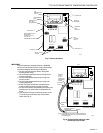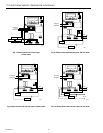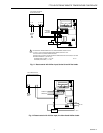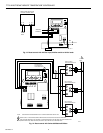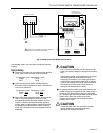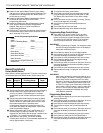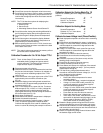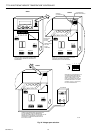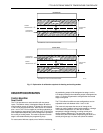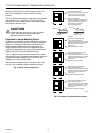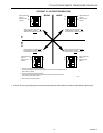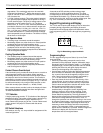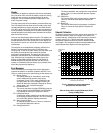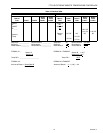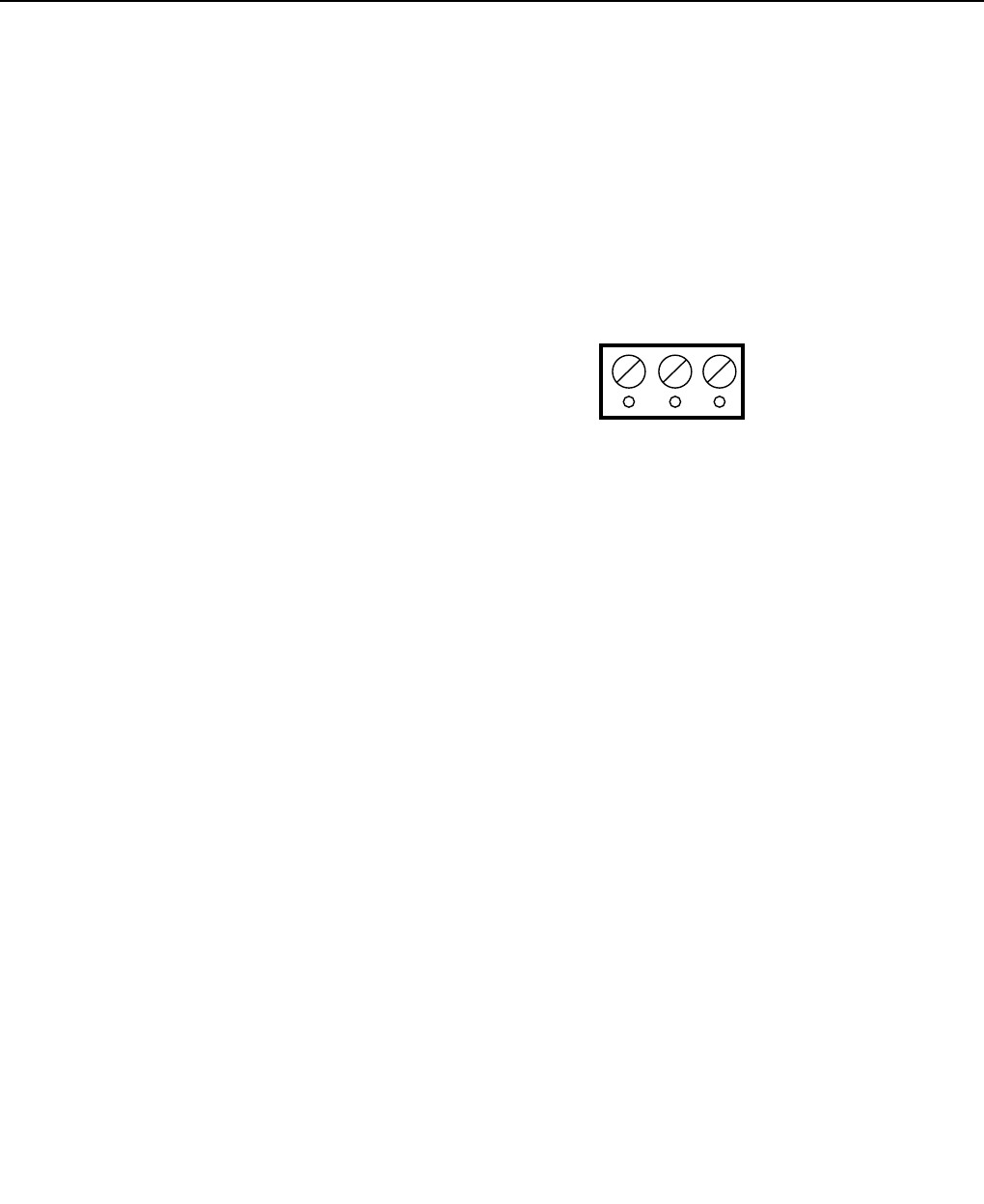
T775J ELECTRONIC REMOTE TEMPERATURE CONTROLLER
63-2248—4
16
degradation. This modulation output can be used with
Honeywell Inc Modutrol IV
TM
Motors that accept an input
signal of 4-20 mA or other Honeywell Inc motors with the
use of resistor kits.
• 0-18 Vdc (voltage ranging): This output mode is intended
as a general purpose voltage output capable of driving a
2 kohm load minimum. The span of voltage output is user
selectable via a DIP switch (see Fig. 14). The spans
offered are 3, 8, 14 and 17 volts. A zero adjustment dial is
provided to allow the user to select common ranges such
as 4-7 Vdc, 6-9 Vdc, 2-10 Vdc, 10.5 -13.5 Vdc, 14.5-17.5
Vdc, 1-15 Vdc, and 1-18 Vdc. This modulation output can
be used with Modutrol IV™ Motors that accept a voltage
span comparable to any of the above. The device is factory
set at the 2 to 10 Vdc span.
Heat Operation Mode
• Throttling range is centered around the setpoint.
• Modulating outputs are at the minimum or closed position
at setpoint plus one-half of the throttling range.
• Modulating outputs are at the maximum or open position
at setpoint minus one-half of the throttling range.
• Relay outputs are energized at setpoint minus differential
and de-energized at setpoint.
Cooling Operation Mode
• The throttling range is centered around the setpoint.
• Modulating outputs are at the minimum or closed position
at setpoint minus one-half of the throttling range.
• Modulating outputs are at the maximum or open position
at setpoint plus one-half of the throttling range.
• Relay outputs are energized at setpoint plus differential
and de-energized at setpoint.
Contact Closure Override Input
A two terminal input is provided to allow the user to override a
relay energized condition of all outputs. When used with
modulating devices, a contact closure override input causes
the output to return to its minimum position. This function is
generated by a contact closure between terminal pins 3 and 4
of the terminal block for sensor input shown in Fig. 4. This can
be achieved manually or by using an EMS controller or time
clock with normally open contacts; i.e., W7505, S7005.
When contact closure override is active, the display will show
the number of stages that would have been energized and
“STAGE ENERGIZED’’ will flash.
°
F/
°
C Selection
A single jumper plug controls °F/°C indication of the displayed
temperature value. The location of this jumper is shown in Fig.
5. The unit is shipped with the jumper installed in the °F
mode. Remove the jumper plug for the °C mode. Remove and
reapply power if the jumper is removed with the device
powered.
DIP Switch Selections
DIP switches, see Fig. 18, are provided for assignment of the
reset configurations.
A second set of DIP switches provides voltage range
selection for 0 to 18 Vdc modulating devices. The span
corresponding to each switch is given on the printed wiring
board below each switch. Fig. 16 shows the location of this
switch, the zeroing dial, and how to set the voltage span. See
Fig. 19 for a summary of action/direction switches.
Keypad Programming and Display
The T775J uses a liquid crystal display (LCD) for interactive
prompting during programming and display of sensed
temperatures and assigned setpoint and differential values.
User programming of the T775J is through four programming
keys.
321
BRW
-+
M2133A
(SERIES 90)
(4-20 mA AND 0-18 Vdc)
Fig. 20. Modulating output terminals.
Programming Keys
The four programming keys are Select, Up arrow, Down
arrow and Enter.
• Select key sequentially prompts the user for what
parameter is being displayed: setpoint, differential, stage
energized, heat or cool (operation mode), 1, 2 (indicating
assigned stage). Once the last parameter value is viewed,
pressing the Select key will again display the control
values from the beginning of the display loop.
• Up and Down arrow keys allow the displayed parameters
to be increased or decreased. After pressing the Select
key, a control value can be changed by using the arrow
keys. Control values will be increased or decreased by
1° F or C each time the arrows are depressed.
• Enter key places the new value into the memory of the
microprocessor. A control value or operation will not be
effective in the memory until the Enter key is depressed.
Control values and operation selection will remain in the
device memory even after power is removed.
• The Select and Enter keys must be pressed
simultaneously to change the control algorithm from
heating to cooling or from cooling to heating. These
parameters (heat and cool) are not displayed during
normal Select key sequences. The only parameters
displayed after pressing the Select and Enter keys at the
same time are stage indication and Heat or Cool. To
change the operation from heating to cooling or vise versa
for a desired output stage, use the arrow keys as required.
Once the mode is changed, depressing the Enter key is
necessary to enter this change into the microprocessor
memory. The next stage of heat or cool assignment will
appear after the Select key is pressed. When all stages are
selected, the display will revert back to sensed
temperature and load energized status.



